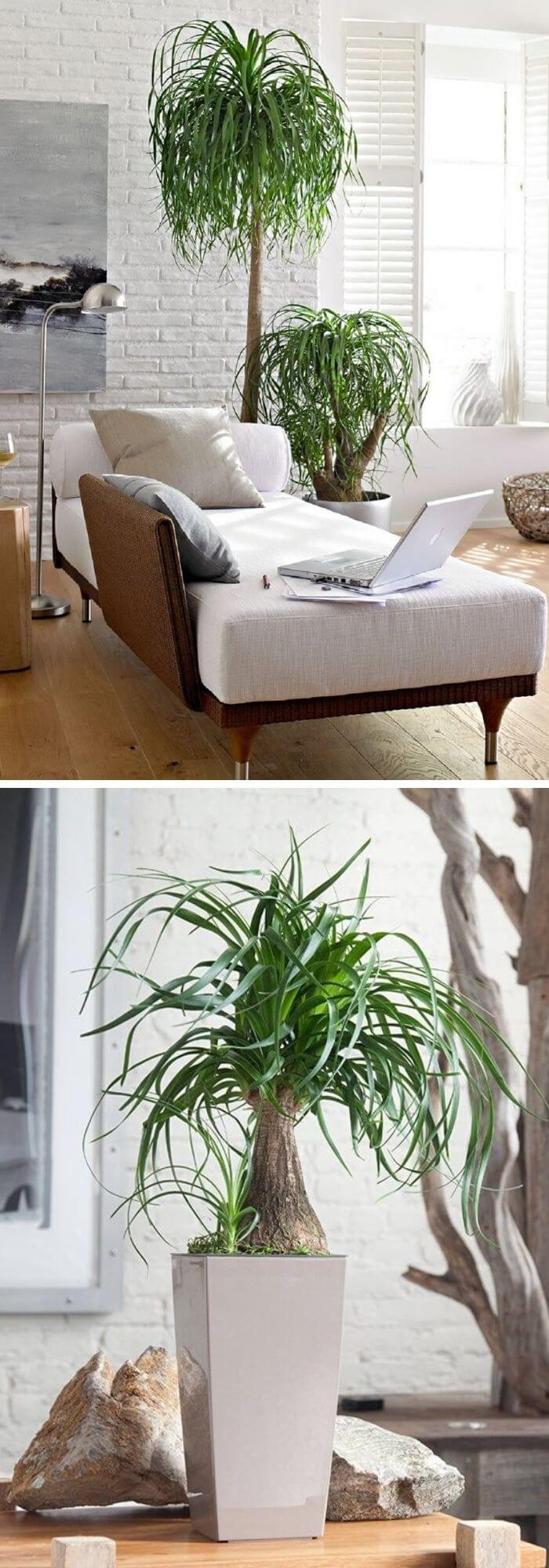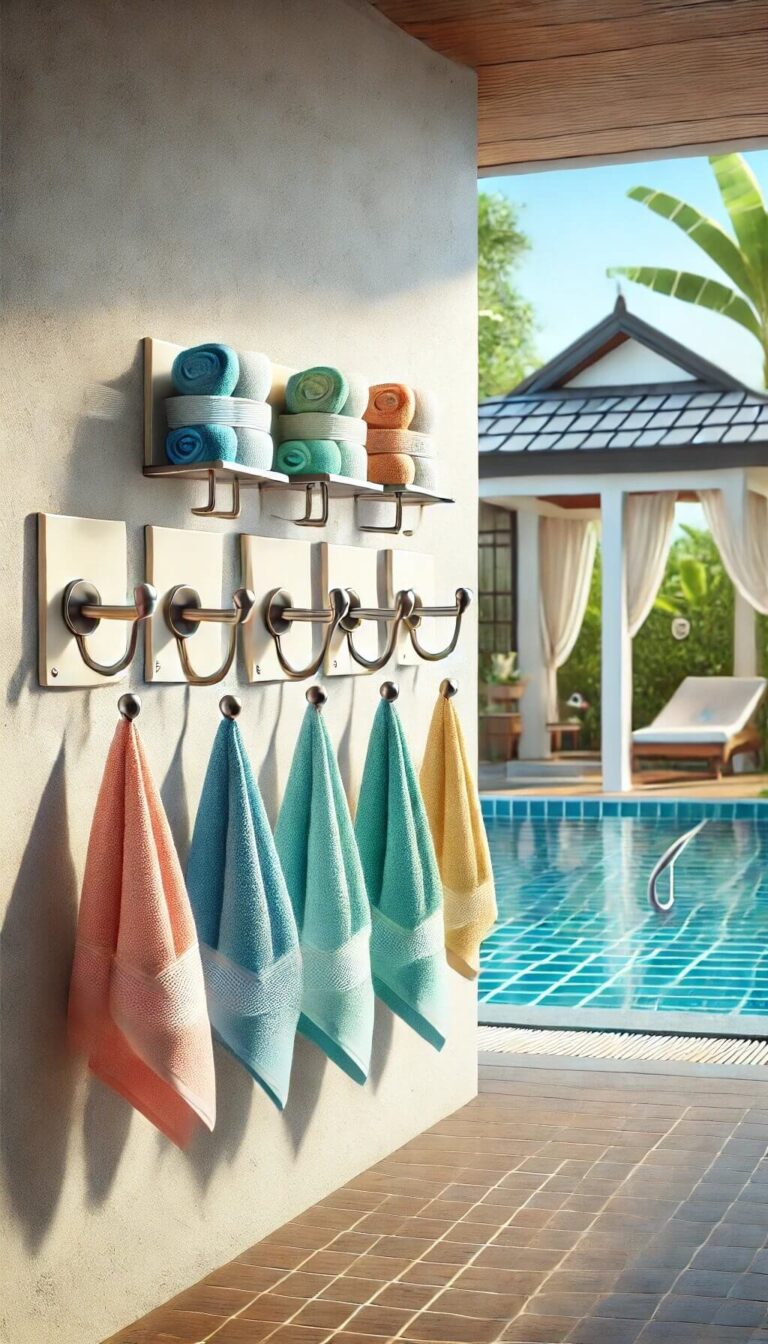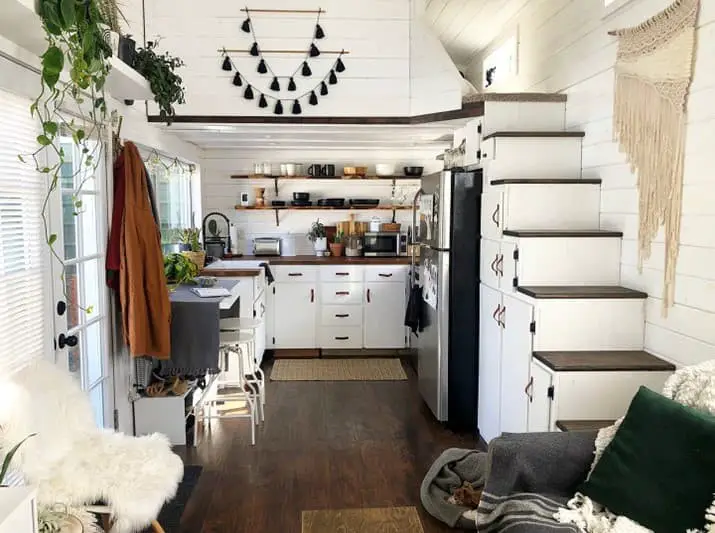21 Different Types Of Gutters To Consider For Your Home (With Pictures)
When selecting gutters for your home, several factors come into play. You’ll need to consider the style of your home, the materials that will work best with it, and the level of maintenance you’re willing to perform. Fortunately, there are many gutter types available, each with its unique benefits and drawbacks. In this article, we’ll explore some of the most popular options, highlighting their pros and cons so you can make an informed decision about which gutter system is right for your home.
Let’s dive in!
Parts and Components
Downspouts
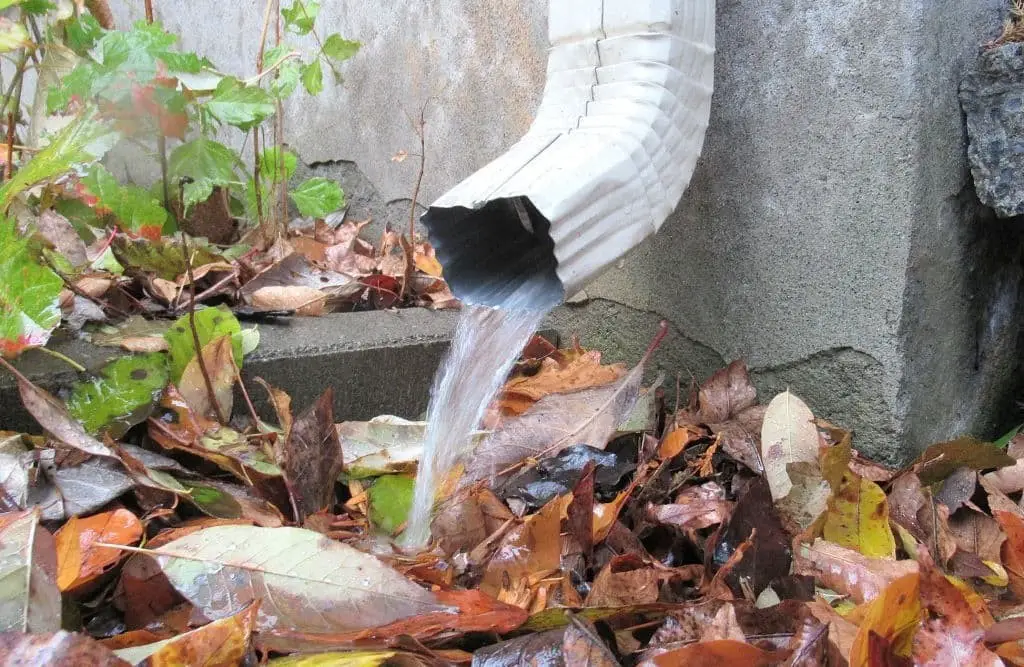
Downspouts are a crucial component in any gutter system, responsible for directing rainwater collected from your gutters to a more suitable location. A key benefit of downspouts is their customizability – the number and direction of the pipes can be tailored to meet specific needs. However, it’s not always guaranteed that they will come as part of the initial package when purchasing a gutter system, so it’s essential to plan ahead accordingly to ensure seamless installation.
Downspout Elbow
A crucial element that enhances the functionality of your rain gutters is the downspout elbow connector. This curved piece plays a vital role in directing water flow from higher points towards lower ones, preventing it from reversing direction and overflowing the gutter’s edges. Its connection to the main trunk ensures seamless water circulation, making it an integral component in maintaining effective gutter performance.
Pipe Cleats
When it comes to securing a gutter system to your home, you have several options for attaching it. Fasteners are a popular choice, with screws and nails being two common methods. However, some modern gutter systems take a different approach, relying on adhesives that won’t compromise the integrity of your siding.
End Caps
To complete the downspout installation, you’ll need to choose from various types of final pieces that cap off each downspout’s end. While there are numerous options available, your selection will ultimately depend on the aesthetic you’re aiming for with your gutters. A no-frills approach would be a half-round end, though this might not offer the most visually appealing finish.
For a more contemporary look, consider opting for a square end that comes in a range of colors and finishes to suit your taste.
Hangers
Gutter attachments come in various forms, each designed to secure gutters to your home’s structure. The type used typically depends on the specific gutter system chosen. Some attachments employ straps for added stability, while others utilize brackets or hangers crafted from plastic or metal materials.
Ferrule
A critical component in maintaining your home’s gutter system is the downspout ring, which serves as a protective barrier at the top of each downspout. This simple yet effective addition provides vital support and safeguarding against weather-related deterioration, making it essential to select a ring that exhibits resistance to rust and other forms of degradation.
Mitered Corner
These versatile corner pieces are designed to suit various home styles, offering four distinct options. The first caters specifically to homes with mitered corners, featuring a precise fit that eliminates gaps. The second boasts a smooth, flowing design, ideal for Victorian-style homes where seamless transitions are essential. A third option offers a more ornate shape, allowing you to tailor the piece to complement unique design elements in your home.
Lastly, the fourth type is square and straightforward, serving as a simple transition between different architectural styles or design motifs.
Material
Aluminum
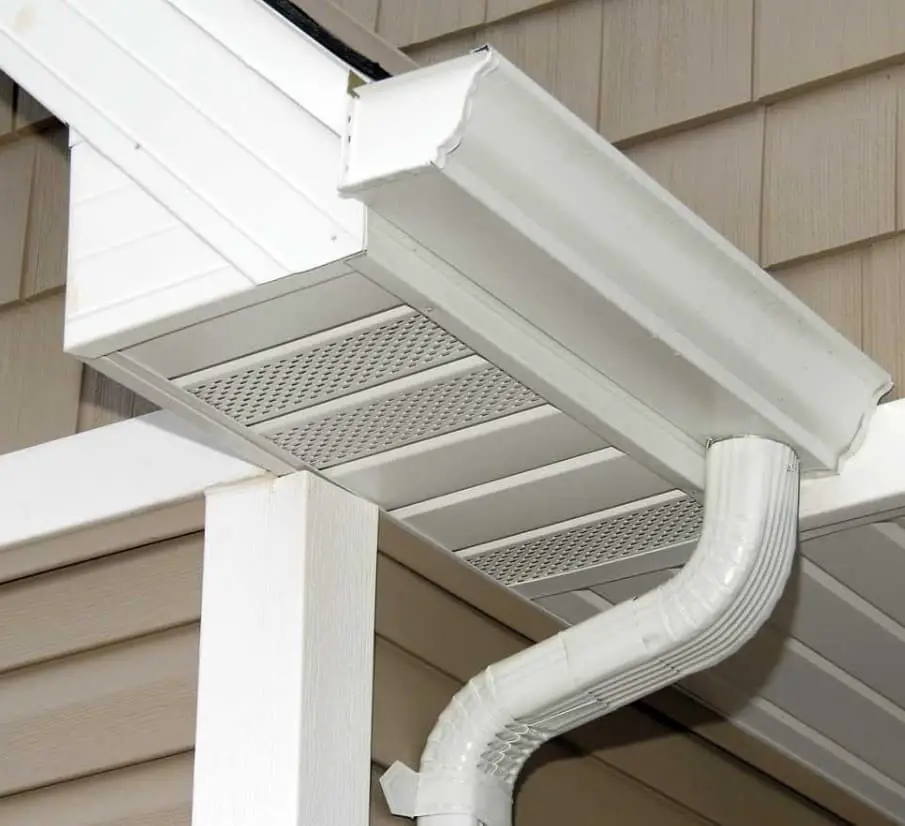
When it comes to choosing the right gutters for your home, aluminum is often a popular option. Its lightweight and easy-to-work-with nature makes installation a breeze. Additionally, aluminum gutters come in a range of colors, including white, which can help reflect sunlight in areas where the sun’s rays are intense. This feature is particularly beneficial for homeowners who live in regions with high levels of solar radiation.
However, it’s essential to consider the potential drawbacks of using aluminum gutters. In areas prone to heavy precipitation – such as those experiencing frequent snowfall, icy conditions, or torrential rainfall – aluminum may bend or warp due to the weight and pressure exerted upon it.
Copper
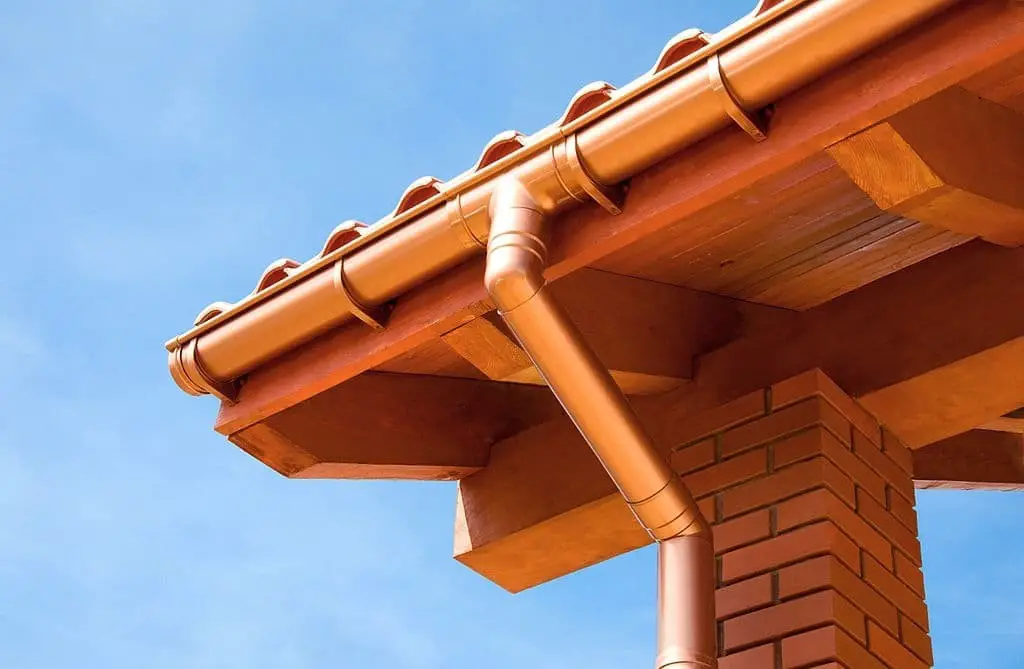
For homeowners seeking a luxurious and long-lasting gutter solution, copper is an excellent option. Its exceptional durability and natural resistance to corrosion make it an ideal choice for areas prone to heavy precipitation, such as rain or snow. The aged patina of copper gutters can also add a touch of elegance and sophistication to your home’s exterior.
Nevertheless, homeowners in hail-prone regions may want to consider alternative options, as frequent replacement would be necessary to maintain the integrity of copper gutters subject to regular hail impacts.
Zinc
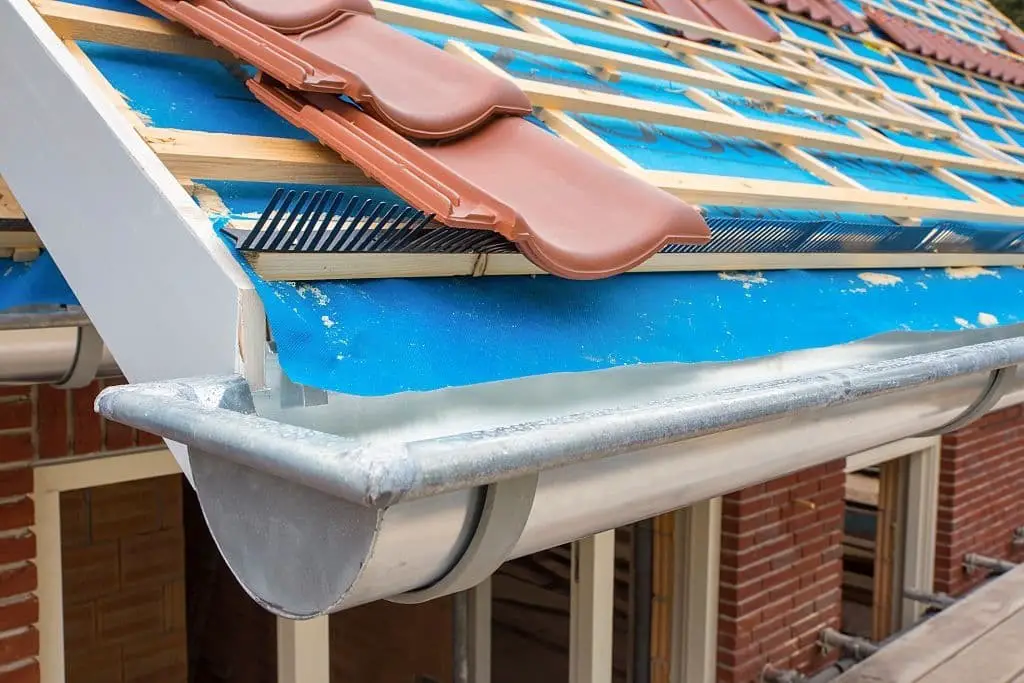
While zinc roofs are an excellent choice for regions with moderate rainfall, their vulnerability to corrosion makes them less suitable for areas with excessive snow or ice accumulation. In contrast, zinc’s low-maintenance requirements make it a popular option for homeowners who don’t want to dedicate a significant amount of time and effort into upkeep. Its ease of cleaning and maintenance also contribute to its appeal as a hassle-free roofing solution.
Galvanized Steel
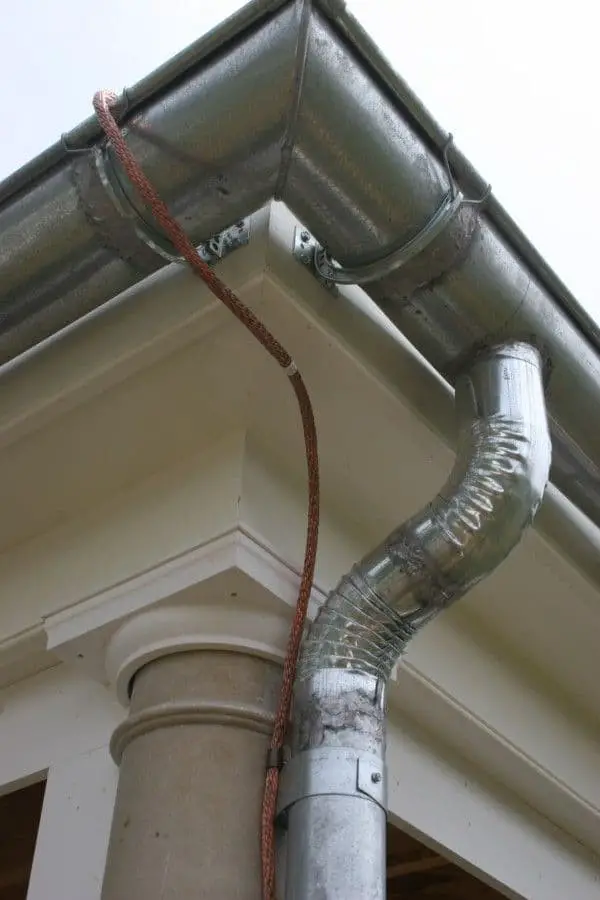
While galvanized steel gutters are ideal for homes that face harsh winter conditions, as they offer enhanced resistance to corrosion from snow and ice, their suitability may be compromised in areas with excessive precipitation. On the other hand, their affordability makes them an attractive option for those seeking to stay within a budget. As such, this material can be a great choice for homeowners seeking a cost-effective solution that still provides reliable performance.
Vinyl
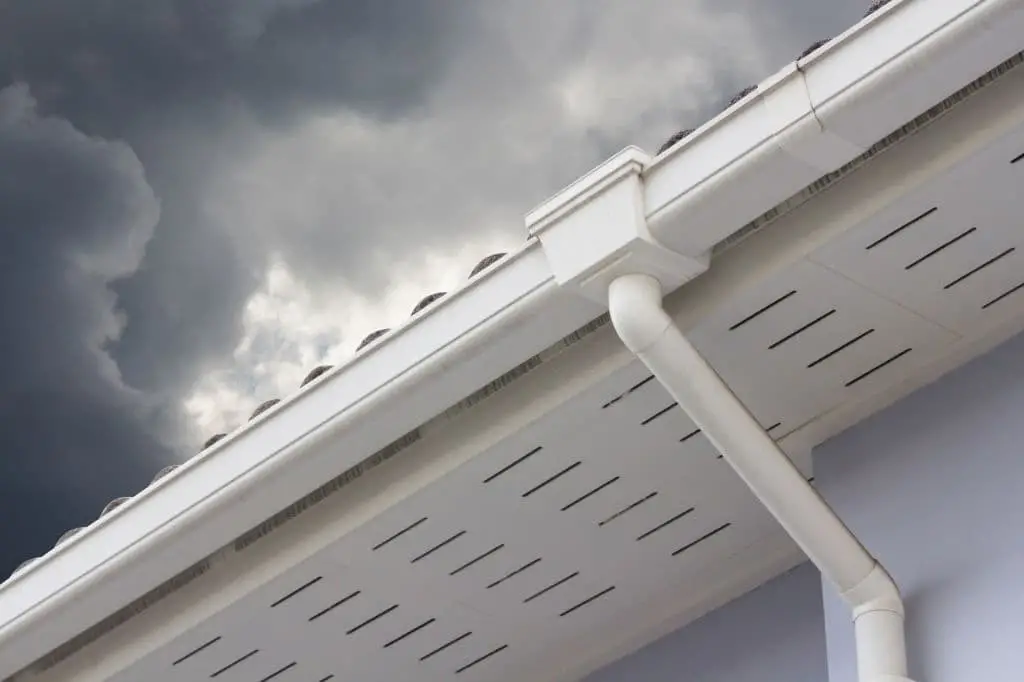
If budget is a top priority, vinyl siding emerges as a cost-effective solution. Its affordability is further amplified by the wide range of colors and styles available, making it adaptable to various home designs. Furthermore, vinyl requires minimal upkeep, reducing maintenance needs. Nevertheless, its durability is not on par with other options. In areas where heavy rainfall is common, homeowners may want to consider more robust alternatives.
Additionally, ice dams can easily warp vinyl siding, rendering it unsuitable for regions with significant snowfall.
Galvalume
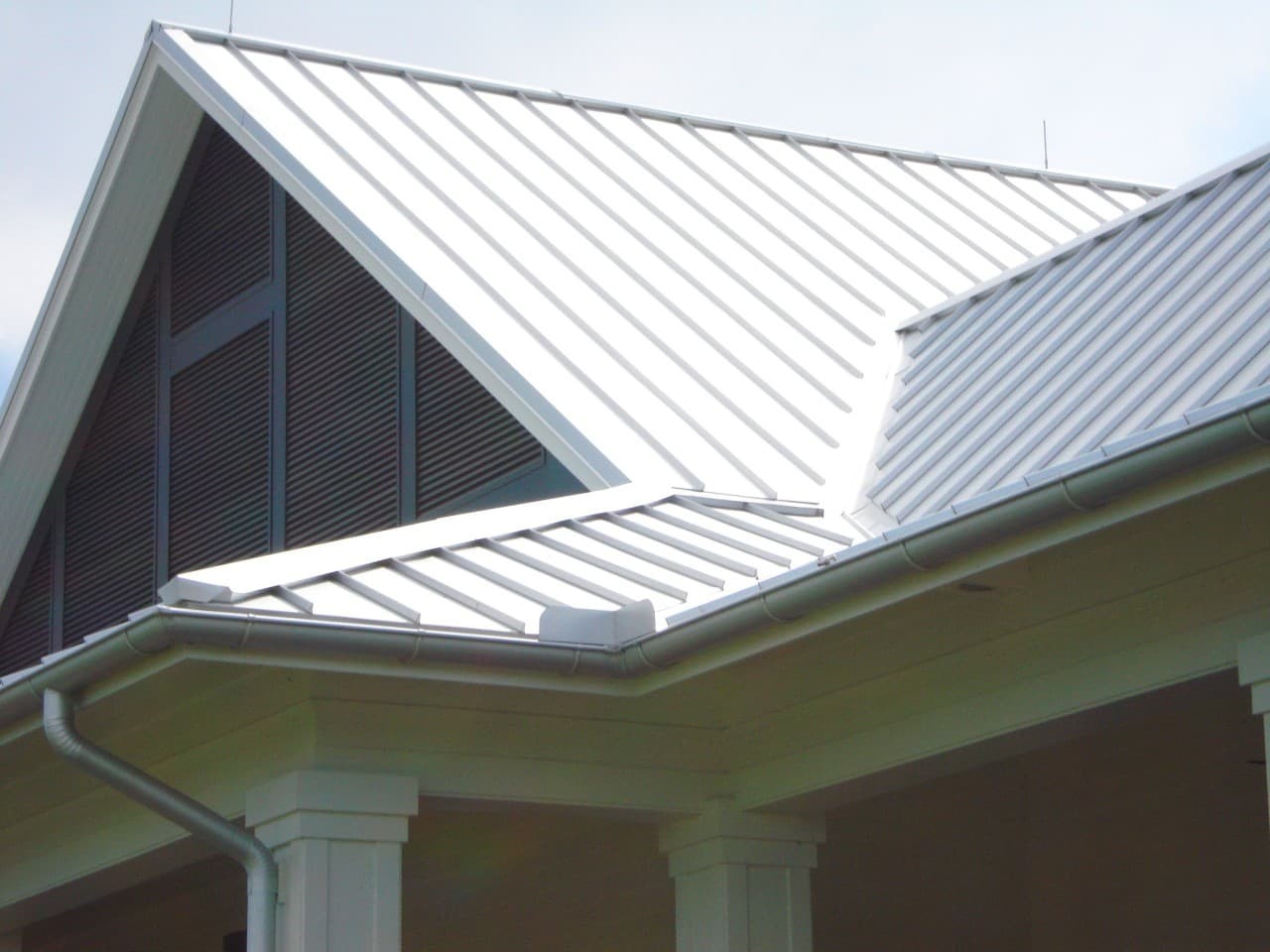
Galvalume gutters boast the best of both worlds by combining the sturdiness of steel with the featherlight properties of aluminum. This fusion yields a material that’s both robust and rust-resistant, making it an excellent choice for homes regardless of climate. While this hybrid material does present some challenges in terms of installation, hiring a seasoned company to handle the job can alleviate any concerns.
On the other hand, attempting to tackle the installation process on your own may prove arduous and time-consuming.
Shape
Victorian Ogee
Ogee gutters are a timeless favorite among homeowners, particularly those with older properties. Their classic design imbues a sense of elegance and refinement, making them a popular choice for many families. While installation can be a bit more involved than other options, the end result is well worth the extra effort. However, if you live in an area prone to heavy ice or snowfall, Ogee gutters may not be the best fit.
This design tends to overflow during severe weather conditions, which can lead to costly damage and compromise the structural integrity of your home.
K-Style Gutters
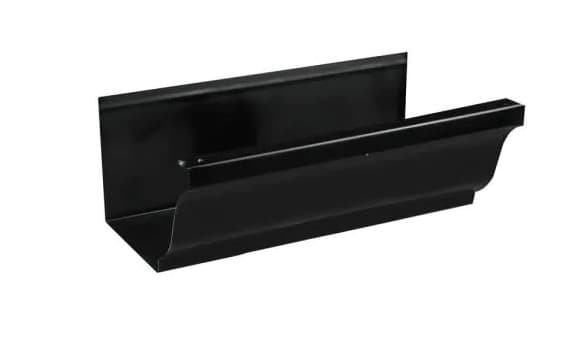
While seamless gutters are the most widely used across the United States, their durability can also make them challenging to work with for DIY enthusiasts. On one hand, they’re straightforward to set up and maintain, which can give your home a sleek, modern appearance. On the other hand, their sturdiness means that any mistakes during installation or repair can be costly to correct.
If you do plan to tackle the installation yourself, it’s recommended to have some professional guidance to ensure the job is done correctly and avoid damaging these high-quality gutters.
Half-Rounded Gutters
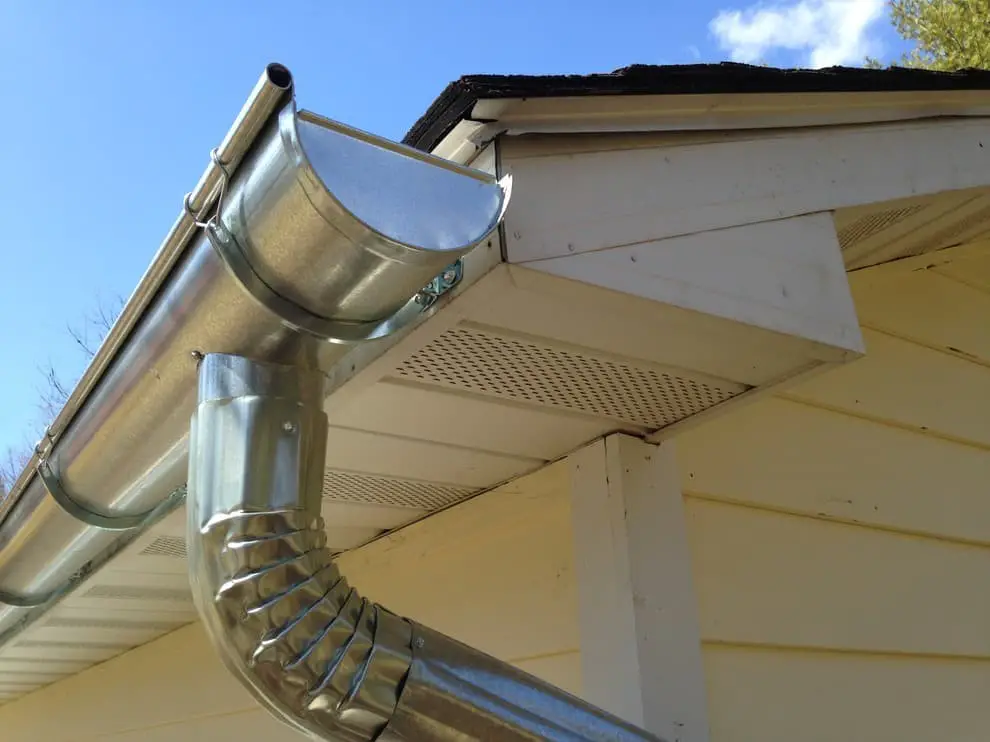
The rounded top of this gutter design lends a touch of simplicity and sophistication, making it a favored choice among homeowners with modern or contemporary residences. Additionally, the smooth bottom surface eliminates concerns about blockages. While they may lack durability, this design does require proper installation to prevent looseness.
European Gutters
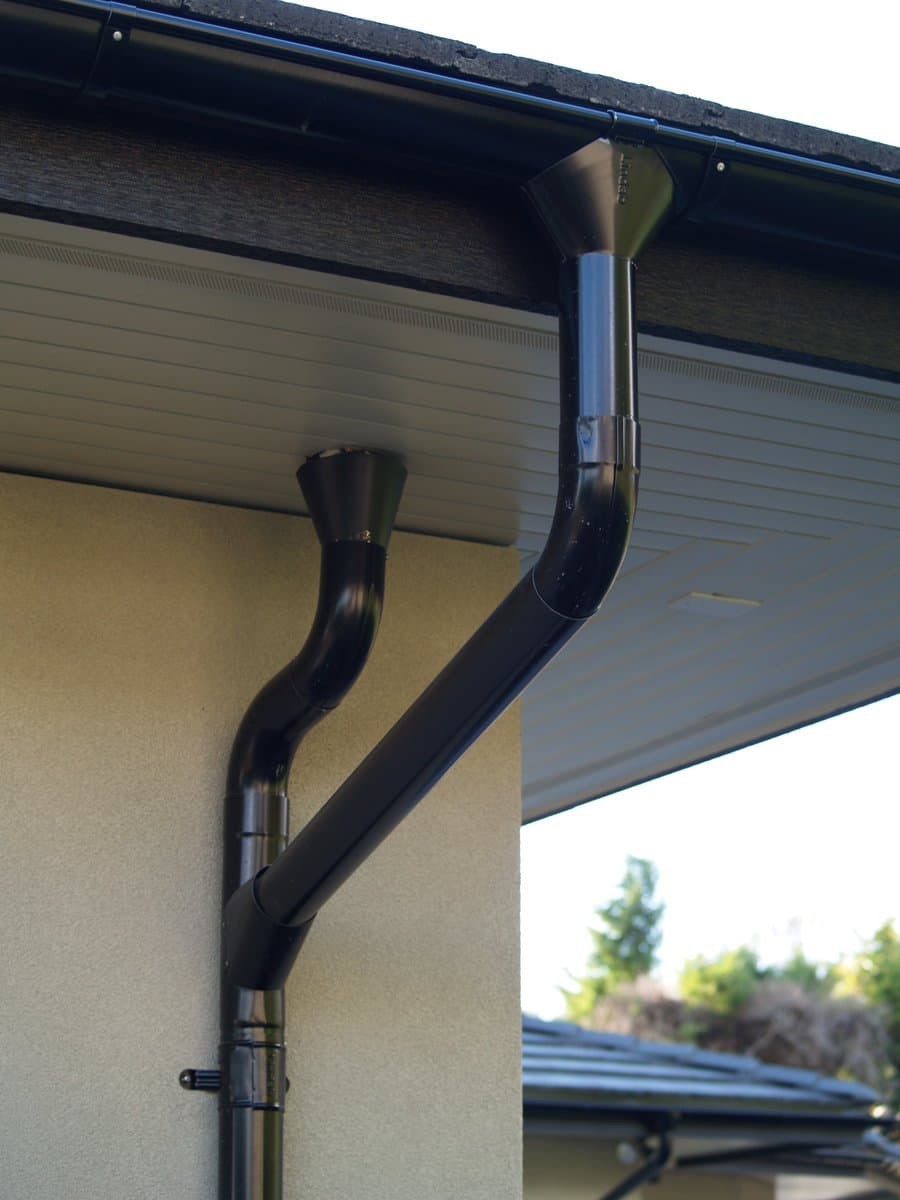
The rounded gutter type boasts a more curved finish compared to the half-rounded option, rendering it less prone to dislodging over time. This security feature makes it an excellent choice for those seeking a reliable solution. Nevertheless, its installation can be challenging for DIY enthusiasts without prior experience or guidance. Without proper knowledge and caution, you may inadvertently puncture or damage these gutters during the installation process.
Fascia Gutters
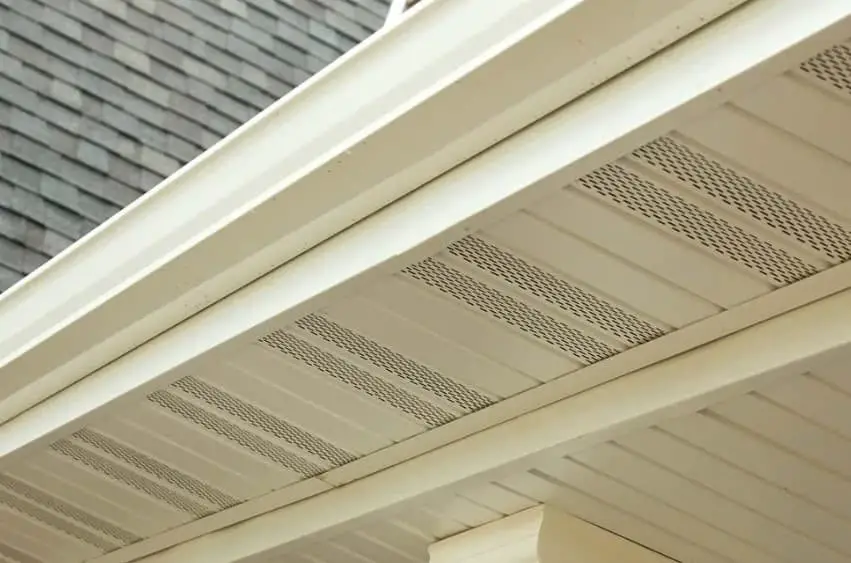
For those seeking a modern and sophisticated aesthetic for their homes, these options are particularly popular. Moreover, they’re an excellent choice for homeowners residing in regions with moderate climates. Characterized by sloped sections that enable water flow while withstanding heavy precipitation during winter, they offer durability and functionality.
Nevertheless, proper installation is crucial to ensure longevity; if you’re not experienced, it’s advisable to entrust a professional with the task.
Construction
Seamless
The primary benefit of these metal roof panels is their exceptional durability, stemming from the fact that they are crafted from a single piece of metal. This design also provides added resilience in areas where precipitation transitions directly from snowfall to rain, as they won’t succumb to sagging or warping issues.
While this material offers many advantages, it’s worth noting that the selection of styles may be somewhat limited, which could pose a challenge when searching for a panel that harmonizes with your home’s exterior aesthetic.
Sectional
When it comes to installing gutters, these types are often favored due to their simplicity and ease of installation. This streamlined process is ideal for those with limited time or patience for complex projects. On the other hand, this type of gutter may not be the most suitable choice for areas that receive significant snowfall, as they tend to be less durable than others.
Color
Bold Colors
When it comes to gutters that make a statement, colorful options have gained immense popularity among homeowners in recent years. Their vibrant hues can add a lovely touch to your home’s exterior. But, it’s essential to consider their durability before making a decision. While they might not be the most long-lasting choice on the market, they’re perfect for homeowners who don’t live in areas with excessive rain or snowfall.
Neutral Colors
For those who want to highlight their home’s natural beauty without drawing attention away from its aesthetic appeal, this option is an excellent choice. Its understated appearance not only blends seamlessly into the surroundings but also stands up well to the test of time due to its durability, eliminating the need for frequent repairs or replacements. While it may lack the variety of color options found in other gutter styles, its subtle charm can still be appreciated.
However, homeowners who crave a wider range of hues might find themselves constrained by this option’s more limited palette.
Size
5-inch
For DIY enthusiasts and those with limited budgets and time, this size is ideal for gutter installation. Yet, if you reside in an area prone to heavy rainfall and snowfall, these may not be sufficient. During intense storms, they can become overwhelmed, leading to gutter backup and overflow issues.
6-inch
If you’re seeking a more long-lasting solution, these gutters are an excellent option. They also offer a convenient upgrade path for existing gutter systems, eliminating the need for additional financial investment. Nevertheless, their installation process is not ideal for homeowners with limited time or DIY experience, as it can be intricate and labor-intensive.
Guards
In the United States, household water damages can reach a staggering $20 billion annually, with many instances originating from neglected gutters. To prevent such costly issues and safeguard your property, it’s crucial to understand the various types of gutter guards. However, for those new to the world of gutters, comparing each option can be overwhelming.
Perhaps you’re reading this because you’re seeking inspiration to replace your existing gutter guard, unsure which type best suits your needs. Fear not; you’ve landed in the right place. Here’s a comprehensive overview of the different types of gutter guards available.
Fine Mesh
When selecting a gutter guard for your system, there are several common options to consider. One popular choice is mesh guards, which offer easy installation and often come in neutral colors that blend seamlessly with most existing gutters on the market. While their simplicity is a major advantage for busy homeowners, it’s essential to be mindful of potential damage during cleaning.
When removing debris such as leaves, twigs, or branches, it’s crucial to use appropriate tools to avoid compromising the mesh’s integrity.
Micro-Mesh Gutter Guards
For those seeking superior gutter protection, consider upgrading to a micro-mesh gutter guard. This premium option boasts incredibly small holes that outperform traditional mesh guards, making it an ideal choice for homeowners who value unobstructed water flow and minimal debris accumulation. Roofing professionals frequently recommend micro-mesh gutter guards due to their unparalleled ability to safeguard against clogs and ensure smooth performance.
Screens
When it comes to choosing the right gutter guard for your yard, having many trees can make all the difference. In this case, opting for a screen-based system is likely your best bet. Not only will it shield your gutters from falling leaves and other debris, but screens are also less prone to damage compared to mesh alternatives. While installation might be a bit more labor-intensive than with mesh guards, this added protection can be well worth the extra effort.
If you’re not comfortable tackling the project yourself, hiring a professional is always an option.
Surface Tension
When it comes to gutter guards that perform well under heavy rain or snow conditions, these options are top-notch. One of their biggest advantages is that they can be installed without requiring any tools, making the process surprisingly straightforward. However, installation may prove more challenging than other similar products on the market, which could be a drawback for homeowners who aren’t comfortable with DIY projects and prefer a more streamlined experience.
Foam Wedges
Among the most resilient gutter guard options available, these products are well-suited for homeowners seeking a low-maintenance solution that will withstand the test of time. Their ease of installation also makes them accessible to those without extensive DIY experience. While this design excels in many areas, it’s not without its limitations – during intense storms, the foam wedges may impede water flow and cause gutters to struggle with drainage.
Reverse Curve Gutter Guards
To fully appreciate the advantages of gutter guards, it’s essential to opt for the reverse curve style, also referred to as a surface tension gutter. This design allows water to flow seamlessly around the guard while effectively preventing debris from entering the system. However, it’s crucial to note that these types of gutter guards require professional installation due to their complexity, which sets them apart from other options on this list.
Brush Gutter Guards
When it comes to finding the most effective gutter guard, a brush-style option is definitely worth considering. This type of guard features long bristles that effectively block leaves and twigs from entering your gutters. However, it’s crucial to note that regular maintenance is essential with this design, as neglecting to clean out debris can lead to clogs and other issues over time.
Which Type Should You Choose
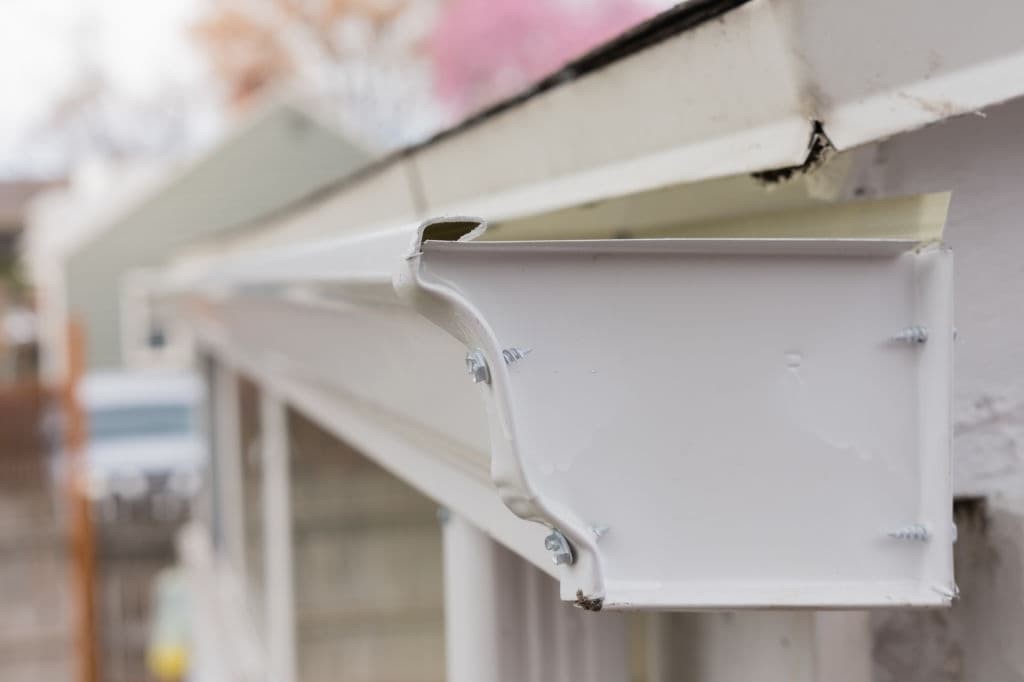
When it comes to protecting gutters without breaking the bank or dedicating too much time, 5-inch gutter guards are a reliable choice for many homeowners. For those who prefer to tackle projects themselves, 6-inch gutters with mesh screens offer another viable option. However, it’s essential to consider your unique needs and preferences before making a final decision.
The key is to think carefully about your home and what would work best for its specific characteristics.
Consulting with a professional can also provide valuable insights and help you make an informed choice.
While some gutter styles may be more efficient or cost-effective for certain types of houses, it’s crucial to consider the local climate and average annual rainfall, as well as the presence of nearby trees that can impact cleaning frequency.
The Longevity of Gutters
While gutter type and style may vary, their lifespan is ultimately determined by the number of storms they’re exposed to. Heavy rainfall or snowmelt can erode the foundation of gutters over time, making replacement necessary every decade or so. However, incorporating guards during installation can significantly extend their life. These aluminum barriers are more resistant to water corrosion than copper or steel counterparts, reducing the need for frequent repairs.
With proper maintenance – including regular debris removal – gutters can remain functional for extended periods. For instance, well-maintained aluminum gutters may last around 20 years, while copper ones could endure for up to 50 years with proper care.
Frequently Asked Questions
Can you Reuse Gutters?
When considering the reuse of gutter materials, it’s essential to prioritize their condition. If the gutters are in excellent shape with no holes or damage, reusing them is a viable option. However, if there are any imperfections, replacement becomes necessary to avoid exacerbating the issue. A professional assessment can provide valuable insight into whether your gutters are salvageable or require new installation.
Can you Sell Old Gutters?
While selling old gutters may seem like a viable option, the returns are often underwhelming. Moreover, their condition tends to be compromised due to prolonged exposure to water, making them less desirable for resale. A more practical approach would be to consider alternative disposal methods. For instance, scrap metal dealers typically purchase gutters and other metal objects at competitive prices, which can be especially beneficial when working with a limited budget.
How to Prevent Gutters from Overflowing?
When it comes to preventing overflowing gutters, one effective strategy is to utilize mesh screens. These screens are particularly useful in areas with heavy rainfall during the summer, as they allow water to drain freely rather than pooling or overflowing. For homeowners who don’t have access to mesh screens, tarps can be a viable alternative – just ensure that at least one section of the tarp allows for smooth water flow.
Another option is to invest in gutter guards, which are typically made from rust-resistant aluminum or other lightweight metals. These guards not only reduce the need for frequent debris cleaning but also tend to be longer-lasting and easier to install compared to other options. While they may come at a slightly higher price point, their benefits make them well worth the investment for those looking to save time and effort in maintaining their gutters.
Is it a Good Idea to Paint Gutters?
While aesthetics are important, homeowners should prioritize a thorough gutter cleaning before repainting. Neglecting this crucial step can result in unsightly dirt and debris accumulation on the freshly painted surface, necessitating repeated cleanings and potentially marred appearances. Instead, opt for exterior metal paint or rust-resistant alternatives specifically designed for gutters, as these professional-grade options will provide a long-lasting and well-maintained finish.
Do Gutters Really Work?
While gutters are often overlooked, they play a crucial role in maintaining a healthy and safe home. One of their most important functions is preventing water accumulation, which can lead to costly repairs if left unchecked. In the winter, gutters prove particularly vital as they help prevent ice dams from forming, thereby avoiding potential leakage issues that would require professional intervention.
By safeguarding your property against these types of problems, you’ll not only save money on future maintenance and repair costs but also enjoy a greater sense of peace of mind.
Who Can Install Gutters?
While it’s feasible for anyone with the right expertise and training to install gutters on their own, many homeowners opt to hire professionals due to the project’s complexity. If you do decide to take on the task yourself, ensure you have all the necessary tools and equipment before commencing work. Additionally, having a basic understanding of how to properly cut and shape metal sheets is crucial if your gutters are made from this material.
When installing gutters, there are several key factors to consider, such as determining the ideal starting and ending points for the system. With careful planning and execution, you can successfully install gutters that effectively manage rainwater runoff on your property.
What is the Best Way to Clean Gutters?
When tackling gutter cleaning, it’s recommended to bring in the professionals or at least borrow a pressure washer from your local hardware store. This approach will effectively remove most debris, leaving only minor particles that require manual removal using tools like buckets and scrubbers. The entire process should take no more than a couple of hours, providing a relatively effortless experience.
However, it’s crucial to exercise caution to avoid accidents, such as falling off a ladder or misstepping in an area, which can lead to serious injuries.
How Often Should Gutters be Cleaned?
Regular gutter maintenance is crucial to ensure they continue functioning properly. Depending on your location, it’s recommended to inspect and clean gutters every month for optimal performance. Areas prone to strong winds or rainstorms may require more frequent cleaning, potentially every week. A balanced approach would be to perform regular cleaning sessions, spaced two weeks apart, rather than waiting for a clog to develop.
For a more thorough cleaning, you can opt for bi-monthly cleanings or weekly sessions. However, it’s essential to exercise caution when cleaning gutters during strong winds or extreme weather conditions, as this may pose a risk while climbing a ladder.
Related Posts
When it comes to curating the perfect exterior aesthetic, the relationship between a home’s color palette and its garage door is often overlooked. However, finding the ideal combination can greatly enhance curb appeal. For instance, if your house boasts a sunny yellow hue, you’ll want to select a garage door that harmonizes with this vibrant tone. A similar consideration applies when pairing a green abode with its garage door counterpart.
Alternatively, what about houses sporting blue or brown roofs? Finding the perfect match can be a challenge, but it’s crucial for achieving a cohesive and inviting exterior look. Ultimately, the key lies in understanding how different colors interact with one another. By exploring the various color combinations available, homeowners can confidently create an exterior design that not only reflects their personal style but also increases their property’s value.

